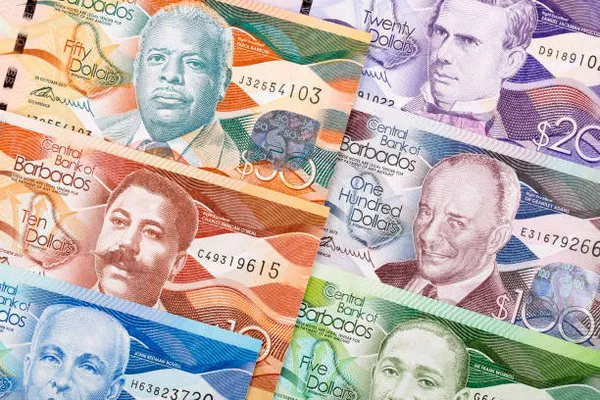Nestled in the vibrant Caribbean, Barbados stands as a jewel in the region, boasting a rich history and a dynamic economy. At the heart of its financial landscape is the Barbadian Dollar (BBD), a currency that encapsulates the nation’s economic resilience and cultural diversity. This article embarks on a comprehensive exploration of the Barbadian Dollar, traversing through BBD history, symbols, codes, and denominations.
Barbadian Dollar Currency History
Formation and Independence
The Barbadian Dollar emerged as a symbol of financial sovereignty in 1973, coinciding with Barbados’ attainment of independence from British colonial rule. Prior to this milestone, the Eastern Caribbean Dollar was in circulation. However, the need for a distinct currency became apparent as Barbados charted its course as an independent nation. The Central Bank of Barbados assumed the responsibility of issuing and regulating the newly minted Barbadian Dollar.
Pegging and Economic Stability
Central to the Barbadian Dollar’s story is its peg to the United States Dollar (USD). This strategic decision, made at the currency’s inception, has been a cornerstone of Barbados’ monetary policy. The fixed exchange rate with the USD fosters economic stability, instills confidence in investors, and facilitates international trade. The peg is actively managed by the Central Bank of Barbados, reflecting the nation’s commitment to fiscal prudence.
Evolution of Banknotes and Coins
The evolution of Barbadian Dollar banknotes and coins mirrors the nation’s progress. From the iconic Sir Grantley Adams International Airport gracing the banknotes to the national flower, the Pride of Barbados, adorning coins, each element tells a tale of Barbados’ natural beauty and historical significance. The vibrant colors and intricate designs serve as a testament to the nation’s artistic and cultural heritage.
Barbadian Dollar Currency Symbol
A currency’s symbol is more than a mere identifier; it encapsulates the spirit and identity of a nation’s financial landscape. The Barbadian Dollar is denoted by the symbol “$” or “Bds$,” representing both the universal currency symbol and the nation’s abbreviation. This simple yet powerful symbol serves as a visual representation of Barbados’ place in the global economic arena.
Barbadian Dollar Currency Codes
In the interconnected world of international finance, standardized codes play a pivotal role in facilitating seamless transactions and precise financial reporting. The Barbadian Dollar is identified by the ISO code “BBD,” a three-letter designation recognized globally. This code ensures clarity and accuracy in financial communications, reinforcing Barbados’ commitment to transparency and efficiency.
Barbadian Dollar Denominations
Banknotes
The Barbadian Dollar exists in a range of banknote denominations, each a canvas telling a unique story of Barbados’ history and culture. Common denominations include 2 BBD, 5 BBD, 10 BBD, 20 BBD, 50 BBD, and 100 BBD. The faces of national heroes and prominent figures adorn these notes, celebrating Barbados’ journey from colonial rule to an independent and thriving nation.
Coins
Complementing the banknotes are the Barbadian Dollar coins, each a small yet significant piece of the nation’s economic puzzle. Coins come in denominations of 1, 5, 10, and 25 cents, as well as 1 BBD and 2 BBD. The designs on these coins feature national symbols, historical landmarks, and marine life, paying homage to Barbados’ rich biodiversity and cultural heritage.
Barbadian Dollar in the Global Economy
Economic Significance
The stability provided by the peg to the USD has positioned the Barbadian Dollar as a reliable and resilient currency in the global economic landscape. Barbados’ economy, anchored by the strength of its currency, has attracted foreign investment and fostered economic growth. The nation’s commitment to prudent fiscal policies further enhances the Barbadian Dollar’s credibility on the international stage.
International Trade
The peg to the USD has proven instrumental in facilitating international trade for Barbados. Businesses operating in the country benefit from reduced exchange rate risks, creating an environment conducive to cross-border transactions. The Barbadian Dollar, with its steadfast peg, serves as a catalyst for economic partnerships and trade relationships with nations across the globe.
Challenges and Future Prospects
While the Barbadian Dollar has been a stalwart in the nation’s economic journey, challenges persist. External factors such as fluctuations in global commodity prices and natural disasters can impact Barbados’ economic stability. The government’s commitment to diversification, sustainable development, and financial reforms positions the Barbadian Dollar on a trajectory of continued strength and resilience.
Conclusion
In the symphony of global currencies, the Barbadian Dollar emerges as a melody of strength, history, and culture. From its inception in the wake of independence to its role in shaping Barbados’ economic landscape, the dollar encapsulates the nation’s journey. As Barbados continues to navigate the currents of economic evolution, the Barbadian Dollar remains not just a unit of currency but a symbol of national pride, resilience, and the vibrant spirit of this Caribbean gem.


